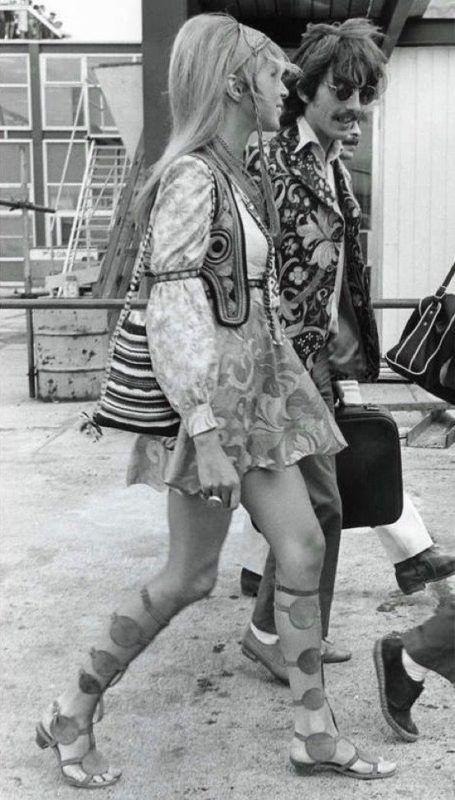The 1960s was a time of great social and political change, and the hippie movement was at the forefront of this revolution. Hippies rejected the materialistic and conformist values of mainstream society, instead embracing peace, love, and freedom. This rejection of societal norms was also reflected in their fashion choices, which were colorful, eclectic, and often handmade.
One of the key elements of hippie fashion was the use of natural materials. Fabrics like cotton, linen, and hemp were favored, as they were seen as more environmentally friendly and in harmony with nature. Tie-dye was also a popular technique, with brightly colored patterns adorning everything from t-shirts to dresses.
Accessories were also an important part of hippie fashion. Headbands, beaded necklaces, and fringed bags were all staples of the hippie wardrobe. Many hippies also wore symbols of peace and love, such as the peace sign or the yin and yang symbol, as a way of expressing their values.
For women, long flowing skirts and dresses were a common choice. These garments were often made from lightweight fabrics like chiffon or muslin, and were often embellished with embroidery or lace. Blouses with billowing sleeves and peasant tops were also popular, as were bell-bottom jeans and tie-dye t-shirts.
Men’s hippie fashion was equally eclectic. Bell-bottom jeans were a staple of the hippie wardrobe, as were tie-dye t-shirts and colorful button-down shirts. Many hippie men also grew their hair long, in defiance of the clean-cut look that was popular at the time.
When it came to footwear, hippies often opted for comfort over style. Sandals, moccasins, and clogs were all popular choices, as were bare feet. Many hippies also embraced the trend of wearing mismatched socks or going without shoes altogether.
Overall, hippie fashion was a reflection of the values and beliefs of the counterculture movement. It was colorful, eccentric, and above all, individualistic. Hippies used their clothing as a form of self-expression, rejecting the mainstream in favor of a more authentic and free-spirited way of life.
In conclusion, hippie fashion was a bold and rebellious statement against the status quo. By embracing natural materials, bright colors, and eclectic styles, hippies were able to express their values of peace, love, and freedom through their clothing choices. Whether you’re looking to channel your inner flower child or simply add a touch of hippie chic to your wardrobe, there are plenty of ways to incorporate this iconic style into your look. So don your tie-dye, grab your fringe bag, and let your hippie spirit shine through.
Summary:
– Hippie fashion was a form of protest against mainstream society, embracing peace, love, and freedom.
– Natural materials like cotton and hemp were favored, along with tie-dye patterns.
– Accessories like headbands and beaded necklaces were common in hippie fashion.
– Women wore long flowing skirts and dresses, while men sported bell-bottom jeans and colorful shirts.
– Comfortable footwear like sandals and moccasins were popular among hippies.
– Hippie fashion was a reflection of the counterculture movement’s values and beliefs, emphasizing individuality and self-expression.
You can review our digital products by following us on Etsy.





